At the dawn of the 21st century, Bank Indonesia (BI) was concerned about its historical buildings and became increasingly involved with their care and conservation. After the careful restoration of Bank Indonesia’s former headquarters in Jakarta Kota, the bank undertook many other projects including the controversial and much debated modern extension to BI’s building in Solo. It also introduced the ‘Bank Indonesia Heritage Award’. Thanks to all these efforts, BI became one of Indonesia’s influential supporters of ‘good architecture’, both old and new. However, BI’s commitment to ‘good architecture’ during the first decade of the 21st century, seems to have come to a full-stop; for how else can one explain what happened in Medan last year?
Polonia
I’m referring to the construction of the new extension to the residence of BI’s director in Medan. The residence dates from the 1930s and is situated on Jalan Sudirman in the grand and lush designed residential area Polonia. Although the architect of the residence is unknown and the building itself is not listed as national or local heritage, Polonia is listed as a heritage district. The latter designation implies that all building projects must consider and respect and contribute to the physical qualities of the area: its spaciousness and green character plus the careful arrangement and design of its buildings.
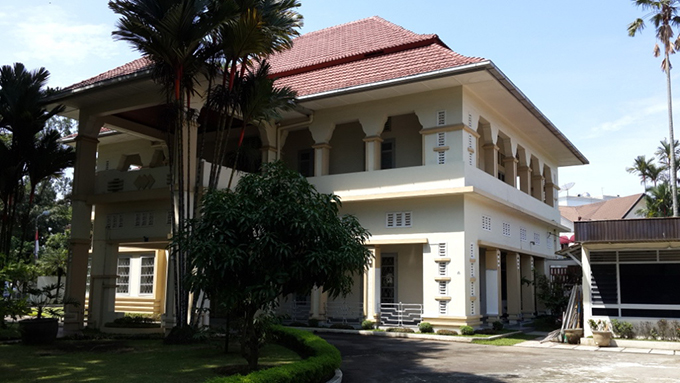
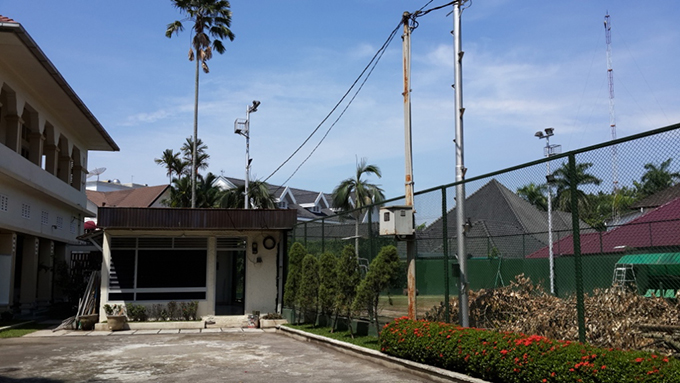
1980s extension
The new extension, completed in 2016, replaced an extension from the 1980s: a fully air-conditioned and oddly shaped volume with low ceilings, dark glass windows and a semi-outdoor pound. Lacking any sign of sophistication or subtlety, the 1980s extension very much clashed with the design and setting of the original, free-standing house. Not so much because the style of the extension was different from the style of the house, but because its design, the selection of material and their application lacked sophistication and subtlety: and this wasn’t the only drawback.
The second drawback of the 1980s extension was its position. Situated where it was, it not only completely blocked the view and the access from the street to the garden, and vice versa, it also stopped the free flow of air around the original mansion ‒ turning the garden into a mosquito infested semi-open space as I experienced myself.
Repairing the past
Although the earlier extension provided BI’s Medan representative with additional living space, it could never be described as offering the ‘sensitive’ architecture one would expect in a heritage district. As such, BI’s intention to replace it with a new extension offered an excellent opportunity to undo an error from the past. Being well aware of BI’s recent commitment to built heritage, the l architect (a local) was delighted when BI asked him to not only restore the original residence to its former glory and replace the 1980s extension with a new design. And how he delivered!
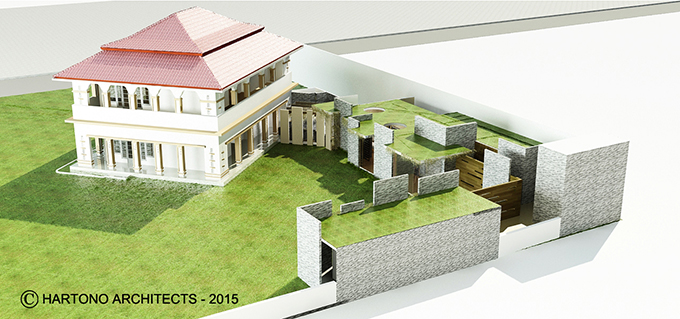
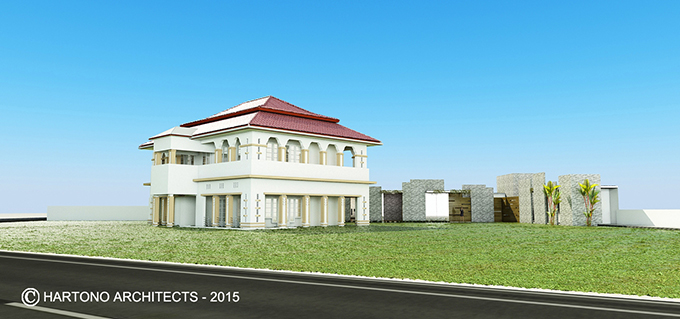
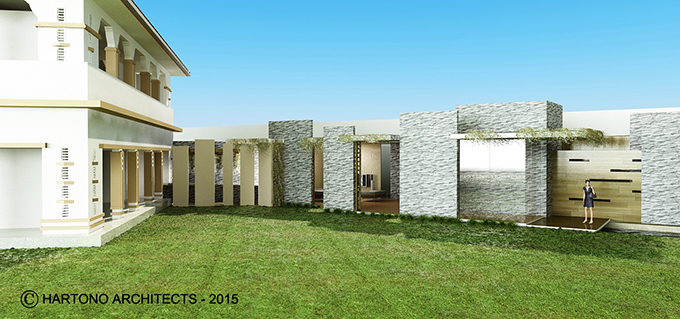
Modest and sophisticated
Using his expertise based on wide national and international knowledge, the architect designed an extension that was everything the 1980s failed to provide: the 2015 design was modest and sophisticated in scale, details and materials. While the new design met the required functionalities, it also restored the residence’s original, free-standing character, its unconventionally shaped but generous garden reconnecting the visual reference between the garden and the street. Last but certainly not least, the new extension was designed to be of low in maintenance and of a low carbon footprint. The new extension, in other words, would sweep away the 1980s blooper with one well-designed stroke of the architect’s pencil.
Overruled
However, things are rarely straight-forward: while everybody in Medan liked, understood and supported the architect’s contemporary yet restrained concept and design, BI headquarters in Jakarta stopped the project in its track. Just minutes before the architect was to present to and discuss his final design with BI Jakarta, he was told BI Jakarta had already decided what it wanted and it wasn’t what he designed. During the meeting, and without even discussing his design, the architect’s proposal was put aside. Instead, BI Jakarta asked him to design what BI wanted.
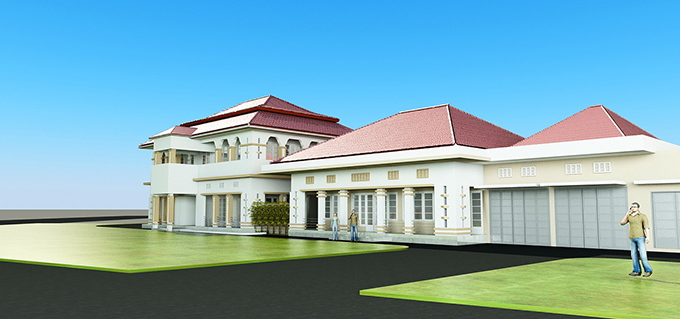
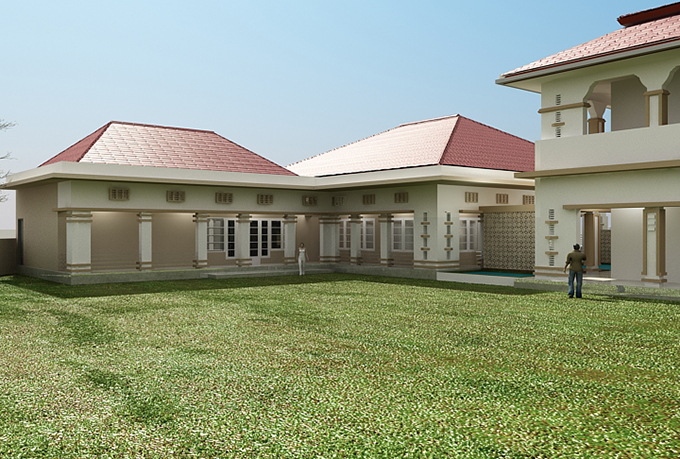
What BI wants
BI’s ‘design’ couldn’t have been more different from that the local architect had designed. Rather than seizing the moment to undo a historical error, BI opted to repeat it. Rather than opting for a restrained and smart design that restored and celebrated the original architecture and setting, BI insisted on what can best be described as a 2015 stylistic update of the 1980 extension. Instead of a sensitive application of contemporary architecture and material, BI opted to more or less ‘mirror’ the architecture of the original house: white stucco walls with an eclectic mix of 1930s details. In so doing, BI destroyed the possibility offered and in one stroke annihilated the careful balance between ‘old’ and ‘new’ the architect so carefully designed.
And it didn’t stop here. Rather than following the architect’s suggestion to position the new extension on the border of the plot, BI insisted the new extension was once again to be directly positioned adjacent to the original house. The only difference this time was that instead of one volume, the extension was to consist of three interconnected volumes – one of which, by the way, was only be used during halal bihal i.e. once a year. Due to its volume and position, the BI extension would thus once again visually and physically close the garden off from the surrounding urban fabric. On top of which the extension would leave nothing but a relatively small garden with narrow, dark and warm spaces at its back where, once again, mosquitoes would thrive.
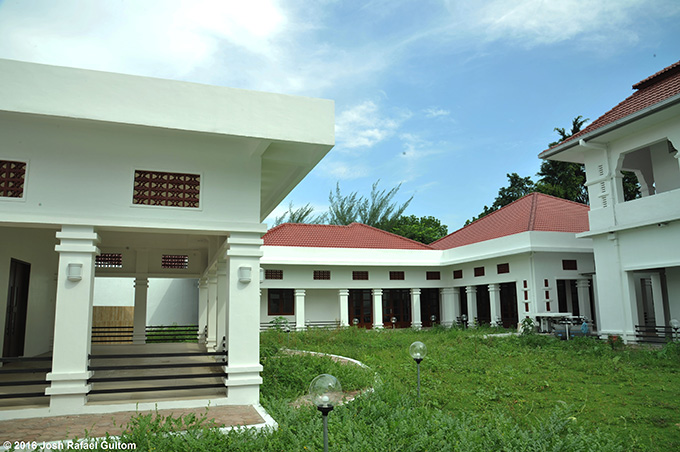
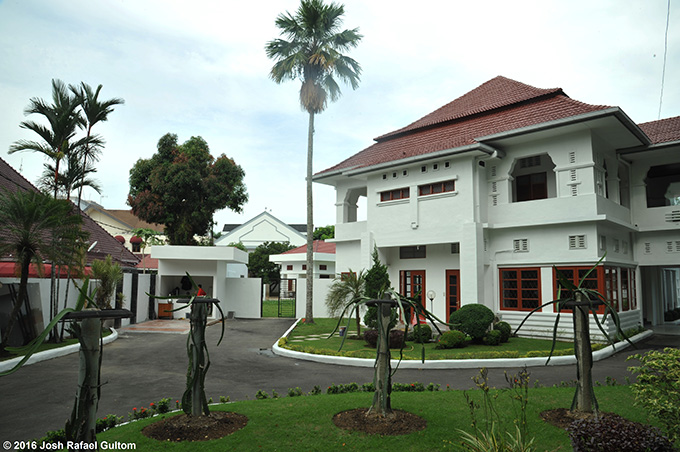
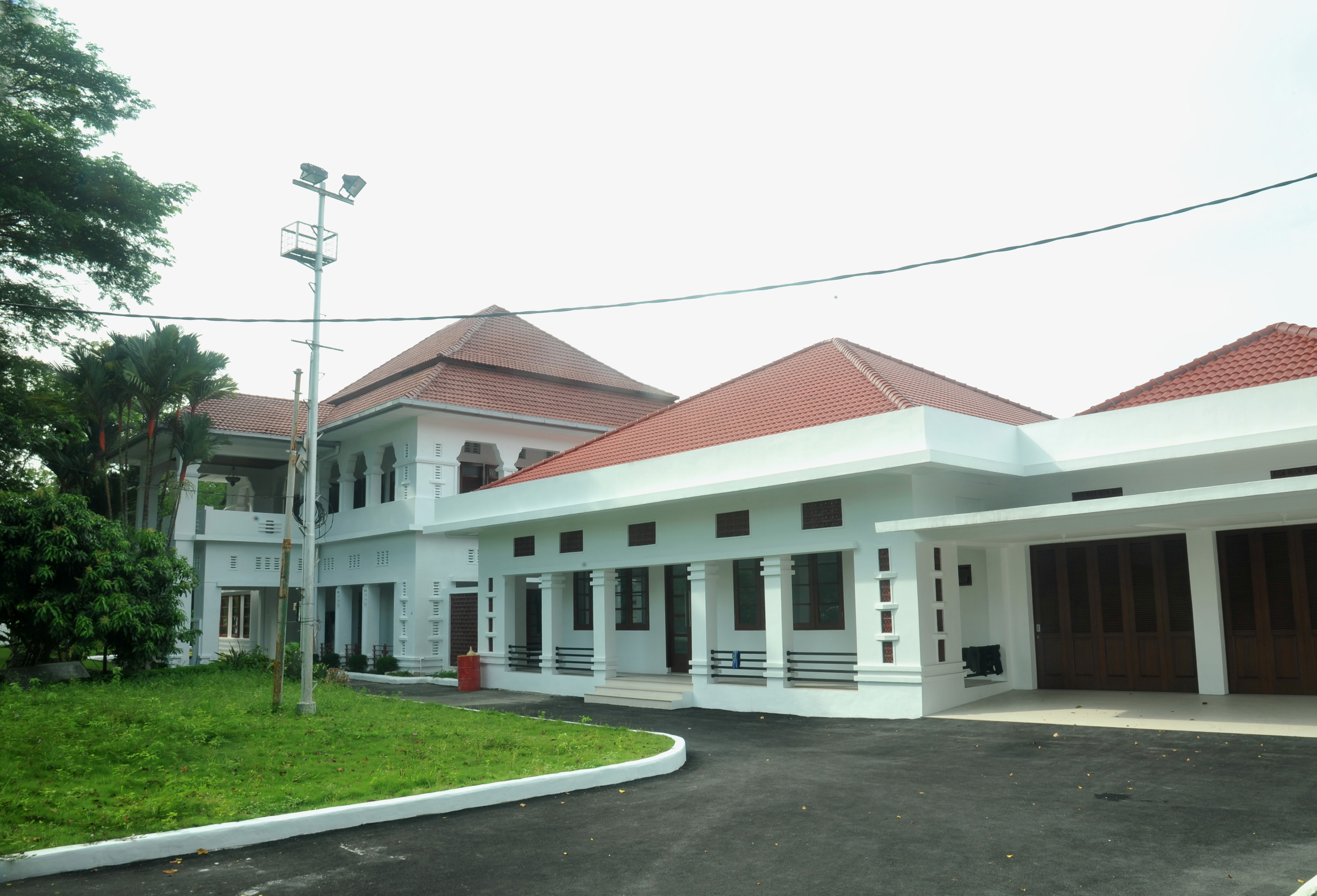
What happened
Comparing BI’s unimaginative plan with the architect’s carefully balanced design, one can’t but weep and wonder what happened? Why was BI Jakarta so dismissive and not open to the architect’s considerate proposal? What was BI Jakarta thinking when it overruled the architect’s thoughtful and considered design? Apparently, budget was not the issue. The extension that BI ultimately ordered to be built in Medan is not in any way, shape or form cheaper than the architect’s sophisticated and sensitive design.
What we want
While the architect was left little choice but to withdraw his design – although involved in the extension’s construction, he was not responsible for its design – this course of events in Medan does not stand on its own. Time and again, architects in Indonesia are overruled by commissioners. Not on the basis of professional arguments, but simply because commissioners dislike a design and think they know best. As architects have little support to fall back on, they often loose out and (have to) give in to the untrained preference and unprofessional opinion of commissioners.
In a world where ‘like’ or ‘dislike’ suffice to win people over, no further argument or explanation is required. But is this what we want? Do we want (and accept) living in a world where the expertise of professionals time and again is ignored? How would other professionals respond? How would, say, bankers feel if farmers or entrepreneurs would mingle in banking affairs? How would lawyers and judges feel if, for example, instead of lawyers and judges teachers and taxi drivers would pass judgement in legal affairs? If we respect and accept the professional expertise of these professionals, why then are architects’ professional expertise in Indonesia time and again side-lined and disregarded.
Respect
While most people recognise and respect the expertise of professionals other than themselves, the majority of building commissioners in Indonesia seem to think very little of the expertise of professional architects. Completely unjust, as the executed extension of BI’s director’s residence in Medan illustrates. In the case of Medan, the architect’s carefully blending old and new architecture would have restored the original residence’s qualities and complemented it with a functional, smart, modest and environmentally friendly addition. Instead of encroaching and dominating the existing house, as the executed extension does, the architect’s extension would physically and visually have celebrated it by taking a step back.
The only uplifting thought in this repeated BI-drama in Medan is that one day BI’s 2016 ‘historical blooper’ might also be undone. Let’s hope that when this happens, the new commissioner will indeed respect the expertise of the architect he or she puts in charge. For the time being though, the architect, Bank Indonesia, Bank Indonesia’s director in Medan, Medan citizens, Polonia and Medan as a whole can’t but lick their wounds.
©Photographs of the 2016 extension are taken in 2016 by Josh Rafael Gultom, Medan.